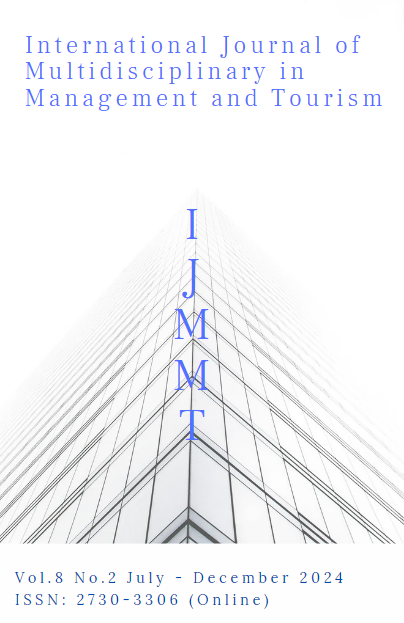Social Media in Education
Main Article Content
Abstract
This article aimed to provide educators and students with an opportunity to engage learners in the online classroom, as well as to support development of learner skills and competencies using social media. Social media is basically a structure that consists of individuals, communities, companies, organizations or classes in universities with similar interests, attitudes, values, lifestyles, visions, friendships, and learning objectives in the field of online learning, this structure can be used in various ways and through a number of tools. This paper tries to study some of the popular social media such as Facebook, X, LinkedIn, and YouTube and see how they could be utilized in e-Learning.
Article Details

This work is licensed under a Creative Commons Attribution-NonCommercial-NoDerivatives 4.0 International License.
References
Albrecht, W. D. (2011). LinkedIn for accounting and business students. American Journal of Business Education, 4(10) 39-41.
Alm, A. (2015). “Facebook” for informal language learning: perspectives from tertiary language students. The EUROCALL Review, 23(2), 3–18.
Burke, S. C., & Snyder, S. L. (2008). YouTube: an innovative learning resource for college health education courses. International Electronic Journal of Health Education, 11, 39-46.
Camiel, D. L., Goldman-Levine, J., Kostka-Rokosz, M., & McCloskey, W. W. (2014). Twitter as a medium for pharmacy students' personal learning network development. Currents in Pharmacy Teaching and Learning, 6(4), 463–470. https://doi.org/10.1016/j.cptl.2014. 04.008
Carlson, T., & Strandberg, K. (2008). Riding the web 2.0 wave: candidates on YouTube in the 2007 finish national elections. Journal of Information Technology & Politics, 5(2), 159-174. https://doi.org/10.1080/19331680802291475
Connolly, T., Boyle, E., MacArthur, E., & Boyle, J. (2012). A systematic literature review of empirical evidence on computer games and serious games. Computers & Education, 59 (2), 661-686. https://doi.org/10.1016/j.compedu.2012.03.004
Coleman, V. (2013). Social media as a primary source: a coming of age. Educause Review. Retrieved January 9, 2024, from https://er.educause.edu/articles/2013/12/social-media-as-a-primary-source-a-coming-of-age
Farnan, J.M., Paro, J. A. M., Higa, J., Edelson, J., & Arora, V. M. (2008). The YouTube generation: Implications for medical professionalism. Perspectives in Biology and Medicine, 51(4), 517-524. https://doi.org/10.1353/pbm.0.0048.
Gomes, S. (2008). YouTube in pediatric anesthesia induction. Paediatric Anaesthesia, 18(8), 801-802. https://doi.org/10.1111/j.1460-9592.2008.02551.x
Gray, R., Vitak, J., Easton, E. W., & Ellison, N. B. (2013). Examining social adjustment to college in the age of social media: Factors influencing successful transitions and persistence. Computers & Education, 67, 193–207. https://doi.org/10.1016/j.compedu. 2013.02.021
Jang, J. Y., Han, K., Shih, P. C., & Lee, D. (2015). Generation like: comparative characteristics in Instagram. Conference on Human Factors in Computing Systems – Proceedings, 4, 4039–4042. https://doi.org/10.1145/2702123.2702555
Junco, R., Heiberger, G. & Loken, E. (2011). The effect of Twitter on college student engagement and grades. Journal of Computer Assisted Learning, 27(1), 119–132, https://doi.org/10.1111/j.1365-2729.2010.00387.x
Kertamukti, R., Nugroho, H., & Wahyono, S. B. (2019). Digital life middle-class on Instagram: like, share and comment. KnE Social Sciences, 3(20), 310–322. https://doi.org/10.18502 /kss.v3i20.4944
Lange, P. (2007). Publicly private and privately public: Social networking on YouTube. Journal of Computer-Mediated Communication, 13, 361-380. https://doi.org/10.1111/j. 1083-6101.2007.00400.x
McLoughlin, C. & Lee, M. J. W. (2018). Personalised and self-regulated learning in the Web 2.0 era: international exemplars of innovative pedagogy using social software. Australasian Journal of Educational Technology, 36(1), 28–43. https://doi.org/10.14742 /ajet.1100
Przepiorka, A., Blachnio, A., & Díaz-Morale, F. J. (2016). Problematic Facebook use and procrastination. Computers in Human Behavior, 65, 59–64. https://doi.org/10.1016/j.chb. 2016.08.022
Salehudin, M., Hamid, A., Zakaria, Z., Rorimpandey, W. H. F., & Yunus, M. (2020). Instagram user experience in learning graphic design. International Journal of Interactive Mobile Technologies, 14(11), 183–199. https://doi.org/10.3991/ijim.v14i11.13453
Seaman, J. & Tinti-Kane, H. (2013) Social media for teaching and learning. Pearson.
Shah, C. (2010. Supporting research data collection from YouTube with TubeKit. Journal of Information Technology & Politics 7, (2-3), 226-240https://doi.org/10.1080/193316810 03748875
Yu, A., Tian, S., Vogel, D., Kwok, R. (2010). Can learning be virtually boosted? An investigation of online social networking impacts. Computers & Education, 55(4), 51494–1503. https://doi.org/10.1016/j.compedu.2010.06.015

